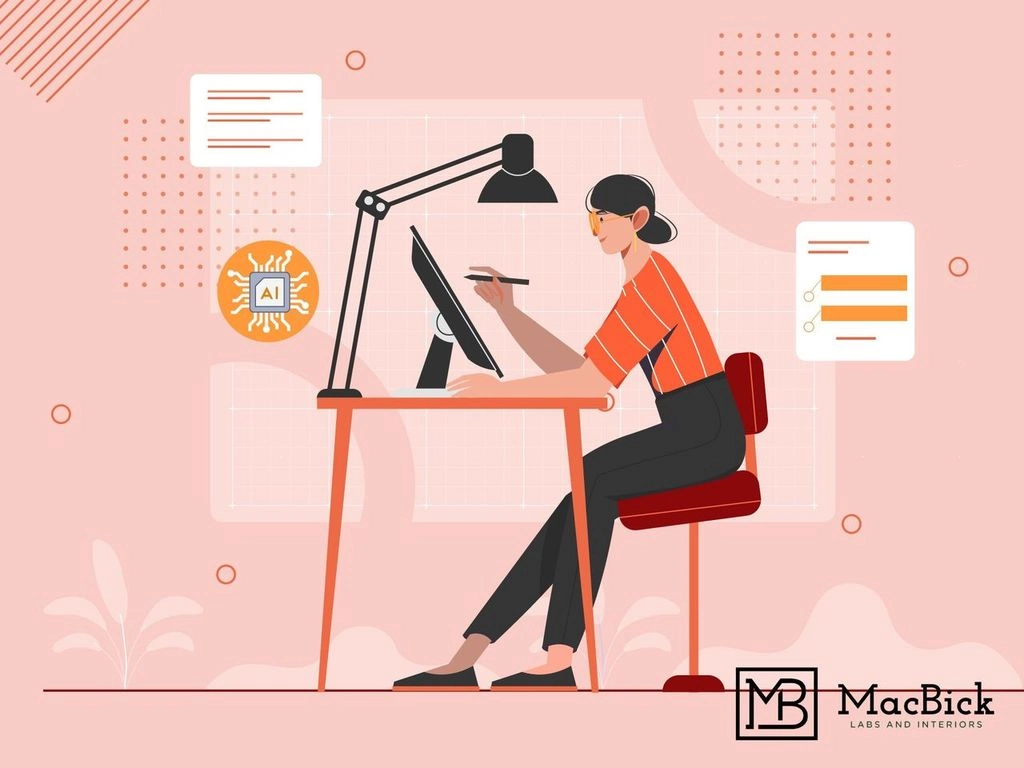Modern problems need modern solutions; the same goes for Laboratories!
To enhance our knowledge and understanding of the core concepts of this world, we must continue our research, which makes laboratories a fundamental pillar of all time.
Laboratories provide the high-tech conditions for researchers to uncover revolutionary medical solutions, make agricultural improvements, and find inventive solutions to the world’s most pressing problems. Successful labs are the product of rigorous planning, cooperation, and coordination among the design team and all involved parties. Even the tiniest faulty detail may negatively influence lab operation and safety. Not only do the scientists and quality of items matter in a lab, but your Lab’s environment and design also play a vital role in your productivity.
So, it becomes highly important to create top-notch laboratory spaces to meet the rapidly evolving research standards. Today, we will learn about cutting-edge layouts and design strategies to build ideal laboratories.
Open vs. Closed Labs – Which is Better?
Both the open and closed labs have their own set of specifications. The open lab idea is quite different from the “closed” lab model of the past, predicated on accommodating the individual main investigator. The open lab concept promotes collaboration among scientists and makes the Lab more responsive to changing demands.
On the other hand, Closed Labs are perfect for specific research and equipment such as Nuclear magnetic resonance (NMR), electron microscopes, tissue culture labs, darkrooms, glass washing, etc. These practices need to be done in separate spaces to decrease the possibility of errors.
Tips to making an Ideal Laboratory
1) Understand the Needs
The first step to designing a Laboratory is understanding the needs of the research. It will help you plan the facility layout more efficiently. Schedule a meeting with the research team and plan the layout with them. Note their scientific workflows, building and space, future expectations, and pain points to understand the full landscape. It will decrease the chances of missing out on any necessary aspect of the laboratory and enhance the efficiency of your design.
2) Know the Codes
Some locations have their own set of building safety and compliance codes. These codes are based on the landscape and other requirements of the area. Make sure that your laboratory design meets all of these codes to increase your Lab’s safety and eliminate any legal or natural risks. Here is a list of some Important Laboratory Design Codes:
- ANSI/AIHA/ASSE Z9.5
- IECC or ASHRAE 90.1
- NFPA 90A: Air-Conditioning and Ventilating System Installation Standard
- ASHRAE Laboratory Design Guide
- NIH Design Policy and Guidelines
- NFPA 101
- NFPA 30: Flammable and Combustible Liquids Code
- NFPA 45: Limit of Liquid Storage
Remember that these codes are just minimum requirements. Always try to exceed expectations and check for area codes of a specific location.
3) Size Matter
Sizing is essential in any lab facility. Decide the size of the Lab according to the unique needs of the research team and pay extra attention to casework. A lab that is not correctly sized may have insufficient space for storing equipment and benches, be inflexible or have limited room for expansion, and have restricted functionality. This problem frequently manifests itself as lab spillage into unwelcome areas like hallways and communal areas, which can lead to a number of safety concerns.
4) Proper Storage Planning
Work with the lab users to define the types of chemicals and gases that need to be stored and subsequent storage categories. A practical storage strategy will eliminate any risk of unsafe storage on bench tops or under fume hoods. This practice will enable a secure, productive lab setting.
5) Fume hoods and HVAC control system Coordination
There should be proper coordination between the fume hoods and the HVAC control system for lab safety, containment, and pressurisation purposes. Throughout the coordination, identify the types of fume hoods, required controls, and integrate EH&S or facility design requirements. This coordination ensures proper lab pressurisation, fume hood containment, and adequate air change rates based on facility requirements and lab type. Ensure a suitable cooling system to save your lab equipment from overheating.
6) Incorporate AI-Based Solutions
Utilizing AI-driven solutions can enhance the efficiency of your facility. AI has the potential to revolutionize the realm of laboratory design, offering benefits across various aspects such as space layout and operational automation. Embrace AI to optimize your processes, save significant time, and ensure your system aligns with essential requirements. Nevertheless, exercise caution not to over-rely on AI, as it can effortlessly assume the majority of tasks. Maintaining a human touch remains crucial for achieving the most optimal outcomes.
Significance of AI in Lab Business
Artificial intelligence (AI) has grown in significance as technology has progressed, particularly in laboratories’ planning, design, construction, and operation. Let’s understand how AI can help in Lab Operations:
Planning: We can incorporate AI into laboratory planning by considering essential points such as data requirements, infrastructure, and budget. AI can help Lab Planning with improved decision-making, reduced errors, and increased accuracy.
Design: Integrating artificial intelligence into laboratory design entails creating technologies that can automate operations and reduce manual work. The advantages of incorporating AI technology into laboratory design include better efficiency, improved safety, and cost savings.
Construction: AI can be used in scheduling and resource allocation, as well as quality control in laboratory construction to improve efficiency and reduce costs.
Lab Operation: You can make your Lab operations more efficient by incorporating AI-based solutions and services. AI can be used for data analysis, predictive maintenance, equipment optimization, and other automation tasks. For example, using computer vision in your Lab can save time and resources.
Contact MacBick for Flexible and Sustainable Laboratory Solutions
MacBick has been servicing the scientific industry for over 100 years, and we use our vast expertise to build practical, efficient, and sophisticated lab facilities that meet the specific needs of research teams. In addition, we are proud distributors of high-quality laboratory equipment, consumables, and furniture. We can also help you automate your laboratory operations at a fraction of the cost by deploying AI-based products and services. So, feel free to contact us and let us help you make your vision a reality!



